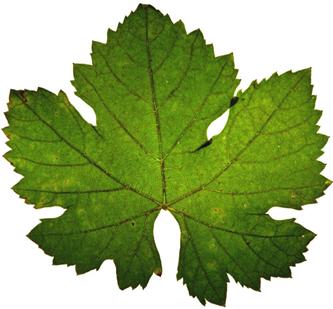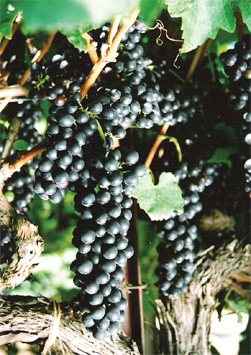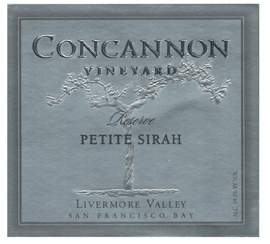 Petite Sirah, Petite Syrah...however you spell it, it’s a cultivar once in disfavor, pulled out or grafted-over. However, this long misunderstood variety is now finding the love from a growing group of passionate Petite producers.
Petite Sirah, Petite Syrah...however you spell it, it’s a cultivar once in disfavor, pulled out or grafted-over. However, this long misunderstood variety is now finding the love from a growing group of passionate Petite producers.
Petite Sirah, the John Wayne of Grapes
Thick-skinned, passionate, All American, Petite Sirah is the Cultivar Conundrum
by Jo Diaz
November 10, 2008
 hen is a cultivar not defined by its name? When it’s Petite Sirah. Although the berries are petite (hence how it became so named), its flavors are neither Petite, nor is the grape Syrah. As soon as Petite Sirah is poured from a bottle to a glass, the mystery begins. This is when we witness that the wine’s so big, black, bold, and beautiful that it becomes very clear (if that can happen through its inky colors) that this wine is light years away from anything petite and demure. Consequently, Petite Sirah has become the most misunderstood variety for consumers.
hen is a cultivar not defined by its name? When it’s Petite Sirah. Although the berries are petite (hence how it became so named), its flavors are neither Petite, nor is the grape Syrah. As soon as Petite Sirah is poured from a bottle to a glass, the mystery begins. This is when we witness that the wine’s so big, black, bold, and beautiful that it becomes very clear (if that can happen through its inky colors) that this wine is light years away from anything petite and demure. Consequently, Petite Sirah has become the most misunderstood variety for consumers.
“Durif” (a.k.a Petite Sirah) was the name that Dr. François Durif, a French botanist at the University of Montpellier in the Languedoc-Roussillon region of southern France, gave to this cultivar. In 1880, Dr. Durif released this new

The genetic origin of California's Petite Sirah has been traced to the Rhône's obscure Durif grape - a late 19th century crossing of Syrah and Peloursin.
The grape's high resistance to powdery mildew encouraged its cultivation in the early twentieth century in areas of France like Isère and Ardèche. At the time, the relatively low quality of the resulting wine caused the Durif to fall out of favor with local wine authorities, and today it’s almost non-existent in France. The variety is also very prone to bunch rot, which could easily destroy a French wine grape growing region, because of its damp climate and super tight clusters that don’t allow for any aeration; so, Petite Sirah is not well suited to a European climate, per se.
There’s one gentleman in France today, Gilles Liège of Monistrol in the Loire, with whom I have intermittent communications. Gilles is somewhat taken aback that the history of Durif so easily left his homeland and is having such success on American soil. He is championing the variety’s French roots, and has taken up his own cause to have it placed back into the history and vineyards of France as a modern marvel.
According to Gilles, “I have impassioned myself to the vine. I have come to acquire old terraces in the area of Monistrol, and have the spirit to rehabilitate these dry stone terraces, which date from the end of the 19th Century. The area is very sheltered, favorable to the vines which existed in the past. Some vines were planted into Petite Sirah and other types of vines pre-phylloxera. A friend of mine in Isère is also interested in planting this type of traditional vine to this area.”
At the time, Gilles was seeking seedlings of Petite Sirah, formerly planted in the area of Grésivaudan; as it happened, Kevin Morrissey of Stags’ Leap Winery was headed to France. I introduced the two gentlemen; Kevin met with Gilles in France, and Gilles continues to send emails to me of his progress. Some day in the future, this will make an interesting progressive, historical read.
Spelling Bee: Is it Petite Sirah or Petite Syrah? The spelling puzzlement between Petite Sirah and Petite Syrah on bottle labels has a very simple explanation. David Bruce (David Bruce Winery), Jeff Cohn (JC Cellars), and Robert Brittan (formerly of Stags’ Leap Winery) have all said that
I’ll always remember David Bruce shaking his head, as he was forced to surrender to the “i” dictum. David said, “I used Petite ‘Syrah’ on my labels for years, because it comes from the father ‘Syrah.’ I just always have, and with my latest Petite Sirah, I’ll have to change direction before anyone tells me to do it.” Because of its complex lineage, the simplest way to understand the involvedness of Petite Sirah is to reduce it to the lowest common denominator: Petite Sirah is the Son of Syrah; there’s no easier explanation. Reflect for one moment on how a father (Syrah) and mother (Peloursin) came together to propagate an offspring (Petite Sirah). Now, reflect on your own lineage. You have to admit that although you share some similarities with your parents, you have still become a completely separate and individualistic entity, just as Petite Sirah has become a completely different cultivar.
Another example of two grape varieties that were crossed to produce another noble cultivar is the crossing of Cabernet Franc and Sauvignon Blanc, which gave us Cabernet Sauvignon. No one would ever mistake Cabernet Sauvignon for Cabernet Franc; however, when it was first crossed, there may have been some confusion. One can only imagine that it was explained for a few years by town criers, as is today’s circumstance for Petite Sirah.

Turning-the-Battleship-Around confusion has continued for years surrounding Petite Sirah in the Untied States, beginning just as soon as it was varietally labeled. In 1964, Jim Concannon of Concannon Vineyard released his first bottle of a 1961 vintage, encouraged by southern California retailer Denny Caldwell. Denny believed that Petite Sirah could stand on its own merit; so, as an experiment, Jim delivered a few hundred cases to Denny. In no time at all, Jim reflects, “Denny had hand sold every single bottle, and came back for more.” Petite production for Concannon has never stopped; in fact, current production is in the hundreds of thousands of cases.
Petite Sirah’s much misunderstood history began to turn around through a grass roots movement initiated by Louis M. Foppiano of Foppiano Vineyards. It was Louis’ long vision to host a Petite Sirah Symposium; and on August 4, 2002, a small core group of passionate Petite producers attended his first Noble Petite Sirah Symposium. Throughout the day, one grower and/or producer after another said over-and-over again, in utter frustration, “We need
 READER FEEDBACK: To post your comments on this story,
click here
READER FEEDBACK: To post your comments on this story,
click here
Print this article | Email this article | More about America | More from Jo Diaz










